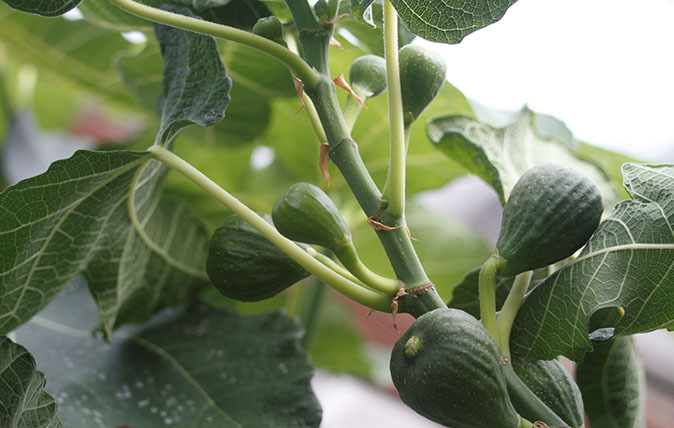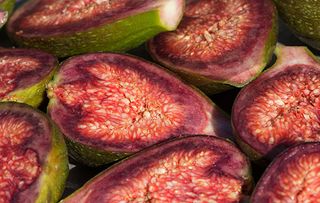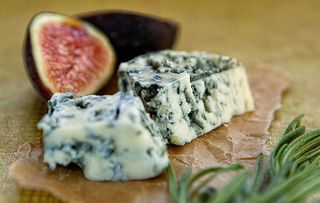Jason Goodwin: 'I think about it when I’m on the stepladder, reaching out dangerously far to tweak a ripe fig'
Jason Goodwin tells our readers why he's now decided to give a fig about the ancient fruit that's been growing in his garden for years.

For too long, I didn’t care a button for our figs. I walked past the trees without a second thought, imagining that figs don’t travel, like Italian wines. Our Mediterranean summer has changed all that. Now, I’m out early, battling with the wasps, trying to get to the fruit before they do.
One prompt was a visit from my sister-in-law, an MP and all-round fidget, who sat in the garden making a special fig-catching device for us out of a walking stick, some wire and a torn pillowcase. The idea, as she explained, is to reach up with the stick and twist the ripe fig with the wire to plop into the little cotton bag.
She propped the fig-catcher up against the back door and the awful truth is that it must have got muddled up with the rubbish strewn across the drive after the boys decided to clean out the shed.
The shed is now sparklingly clean and well organised and will stay that way until someone realises that all the rubbish on the drive needs to go back in again before it rains, but I haven’t seen the fig-catcher since. I think about it when I’m on the stepladder, reaching out dangerously far to tweak a ripe fig into my hand.

A fig is pleasantly rude, Brown Turkey especially, with its pendulous outer sheath and yonic interior: no wonder it feels it should hide behind those outspread leaves, shaped like big shy hands. Brown Turkey is the usual fig for our climate, but there’s one called White Marseilles, which the last Catholic Archbishop of Canterbury, Archbishop Pole, brought back from his time in Rome.
He planted it at Lambeth Palace in 1552. Not only is it still growing, and fruiting, in the courtyard today, but, a few years ago, Justin Welby took a cutting to the Pope, to represent their common heritage and encourage the idea of fruiting from one source.
It was a good idea on many levels and a fig is bound to do well in the Vatican; even here, I’ve sometimes used fig cuttings to mark lines of vegetables and they invariably take root and sprout.
Sign up for the Country Life Newsletter
Exquisite houses, the beauty of Nature, and how to get the most from your life, straight to your inbox.
The fig is also very ancient. There’s one against a house, just inside the Roman walls of Chichester, which may as well have dropped from a legionnaire’s purse.
Further along the coast, at Worthing, is the Tarring Fig Garden, open to the public one day a year, in June, whose ancient trees were planted in about 1745. They’re traditionally supposed to have been taken as cuttings from another archiepiscopal fig, one that grew nearby in the garden of a house belonging to Thomas Becket.

I’m tempted to agree with scholars who think that Eve’s apple was, in fact, a fig – the same tree supplied them with leaves to hide their nakedness once they had lost innocence. Thereafter, it was cultivated and used as a sweetener.
I know a few good ways of eating them raw, other than fig-diving. One is to squeeze them slightly open at the base, stuff them with soft goat’s cheese and bake them in the oven for a few minutes with trickles of runny honey and olive oil.
Some people like figs in salads. You can wrap half-figs in smoked bacon and roast them. You can make them into jam, of course, observing that they’re very quick to burn, but they mingle well with plums.
The other thing about figs is that they don’t keep. They slip from ripe to rotten in a moment, so you have to find someone to share them with. Nature leaves no time to waste. That is why they are the fruit of voluptuaries and priests: carpe diem.
-
 How many puppies in the average litter? Country Life Quiz of the Day
How many puppies in the average litter? Country Life Quiz of the DayPlus a 1960s house, Hollywood's most famous cavewoman and more in Friday's quiz.
By Toby Keel Published
-
 Love, sex and death: Our near-universal obsession with the rose
Love, sex and death: Our near-universal obsession with the roseNo flower is more entwined with myth, religion, politics and the human form than the humble rose — and now there's a new coffee table book celebrating them in all of their glory.
By Amy de la Haye Last updated